There can be your advertisement
300x150
How to Do a Quick Bathroom Remodel: A Step-by-Step Guide
Owners of standard apartments are often surprised: remodeling in a small bathroom always takes a lot of time! We've collected several ideas that will significantly speed up the process
There are many ideas for quick bathroom and toilet remodeling, as is known. But there are even more questions about their use: what works in one space doesn't work at all in another. That's why we didn't just list the methods of fast finishing of 'wet' spaces, but also highlighted possible 'traps' related to their application – be careful!
Clear Plan
Any renovation should begin with a project, and the bathroom and toilet are no exception. However, since these are functional spaces, and daily use is directly related to the use of complex engineering communications, a lot of restrictions are placed on our design fantasy.
First, you'll have to thoroughly study your own home: structure and specifications, or at least the series. Check the state of pipes and plumbing, and understand whether anything in the list needs to be replaced. Also assess the condition of walls and ceilings: it's good if they don't require leveling. This affects the choice of finishing.
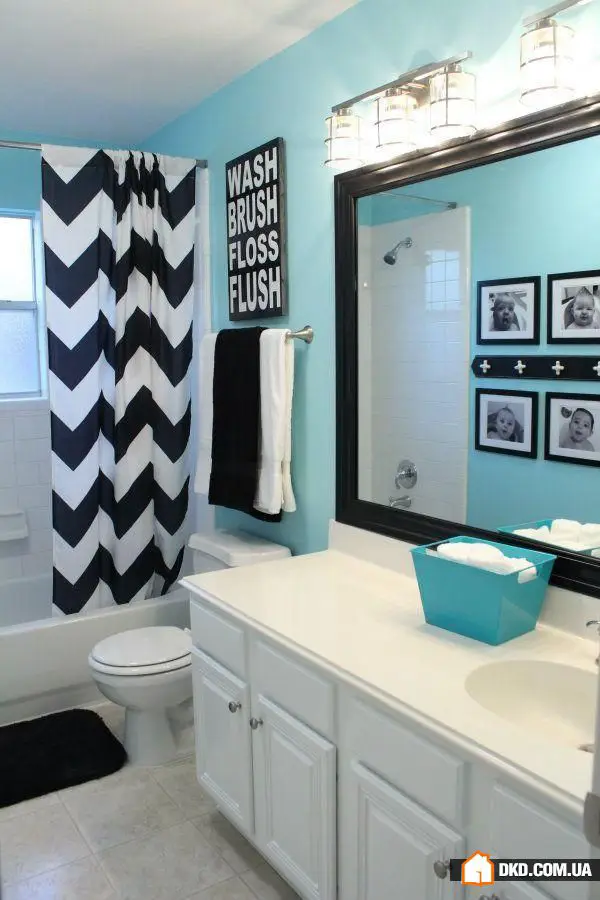
Floor – Old or New?
Working with the floor is the basis of all renovation. If you need to replace both the covering and pipes, and the bathtub at once – cancel the quick timeframe, prepare for time and get ready to perform a semi-dry or wet screed with reliable waterproofing.
If you've decided to remove the old tiles and lay new ones, then the minimum required work after removing the old covering – a thick layer of tile adhesive as a kind of filler. It should be about twice as thick as usual for tile installation. Level it, let it dry (a couple of days), apply primer – and let it dry too. Then you can lay the tiles.
This method works if you're confident in the reliable waterproofing in your own bathroom, and you don't need to replace pipes or drain positions.

What's important to consider: many DIY enthusiasts use self-leveling poured floors as a quick screed under tiles. Or they lay new tiles on old ones. You can do this, but carefully – usually the load on the floor slabs in 'wet' rooms is already significant, so laying additional layers on the floor can be a risky measure for the entire building. In any case, find out what the load limits are for your home. Also, even if the old tiles lie flat, they may start to 'move' over time under additional load. And laying a new layer on a smooth base is not easy. Usually, for solving this issue, you need to score the tiles with special grooves. The process is comparable in time to removing the old covering, dusting, and noise. In short, the choice is complex and completely depends on the existing conditions.
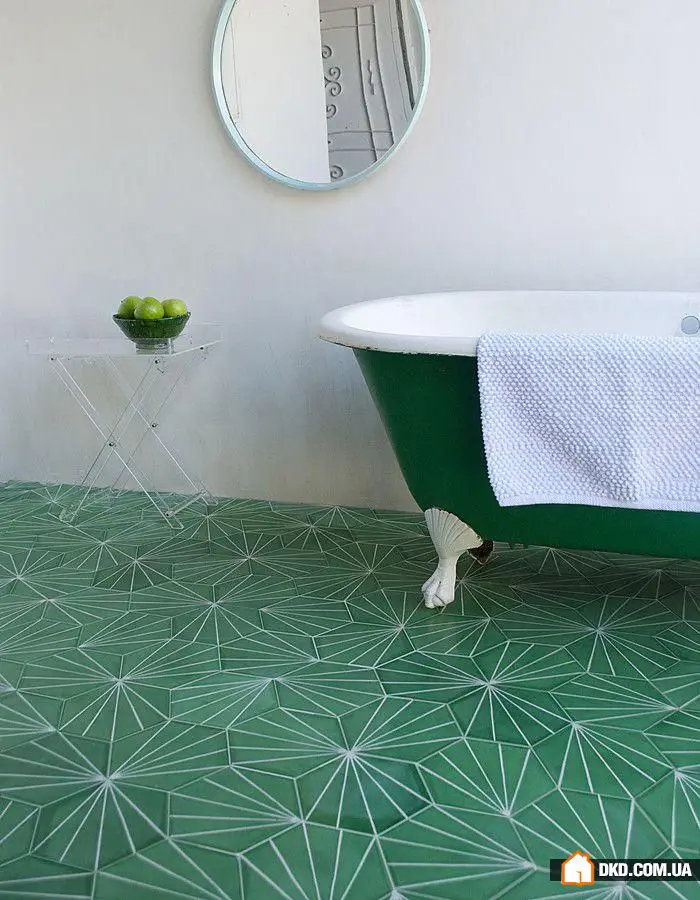
Light Alternative:
If you don't have time to fiddle with tiles or ceramic granite, you can remove the old tiles (or not remove them!) and lay, for example, cork flooring. This is a great way to save time and nerves – everything except money.
Cork also requires a flat base, but you can use a sheet of plywood as a backing. Or lay polyethylene film on top of the old tiles (if they're securely and firmly laid) to install cork floating. This provides additional waterproofing for the floor covering.
Cork is a light, strong material that doesn't let moisture through, and most importantly – it's warm. This is especially important: installing heated floors in the schedule of a quick renovation doesn't fit at all. Another comfortable option for flooring is vinyl tiles or vinyl panels. They simply stick to a smooth base – if you haven't removed the old tiles, the panels will probably grip well on them.
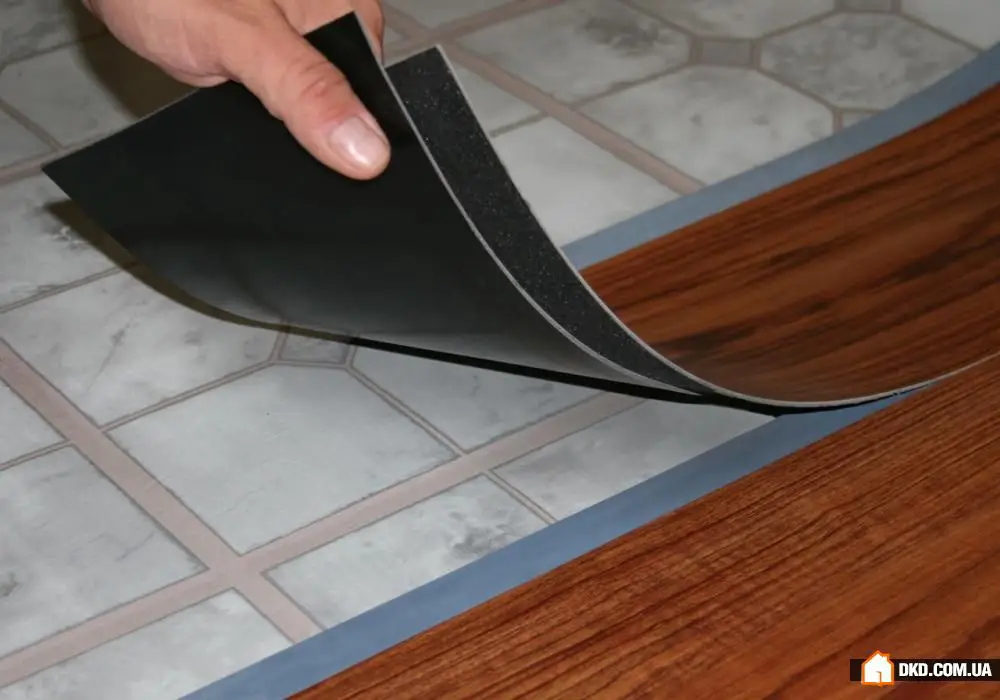
High-Quality Option:
In the top ranks of DIY reviews – quartz vinyl panels with a 'wood' texture. They look like real laminate that doesn't slip. The base for such flooring should be spackled, especially if you've removed old tiles. Quartz vinyl panels are either glued with acrylic adhesive or mounted using interlocking connections.
You can choose a quartz vinyl material with the look of natural stone (marble or travertine) – in this case, it would be better to use square or rectangular tiles instead of panels.
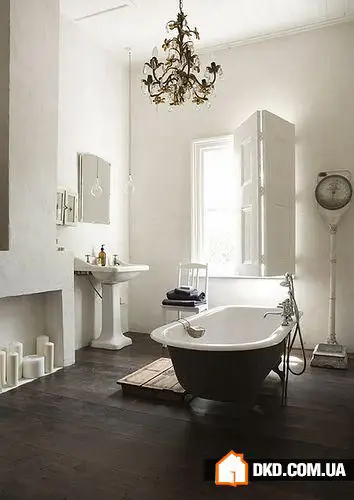
All the recommendations listed for selecting and installing floor covering apply to the bathroom as well. Many think that in a toilet you can lay parquet in a checkered pattern – but it's very important to choose the most moisture-resistant floor for this space.

Walls: Water Shield
After finishing with the floor (finally!), you can think about how our renovation is still quick. And stop choosing wall finishing on the old reliable tiles, which will require work, but rather on tempered glass. If the walls are flat, confidently install glass panels in the shower area and above the sink. Just mark all holes for mounting shower stalls and holders. An alternative to fragile glass – acrylic or polystyrene mirror panels (this material is significantly cheaper).

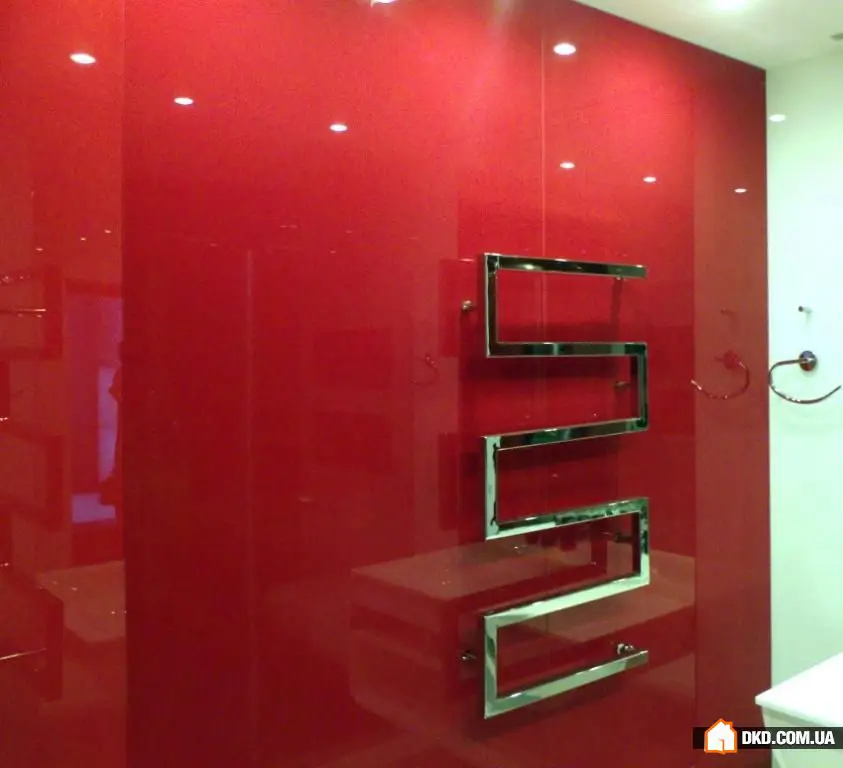
Wall Panels
– another option for finishing in 'wet' areas: choose polyvinyl chloride or moisture-resistant panels from MDF for the fastest installation. The material doesn't require wall leveling, but it does need a stud frame – prepare to give the finishing a few centimeters from each wall.
For obvious reasons, wooden strips don't suit – use aluminum profiles. It's better to choose panels with a 'tongue and groove' system connection. In any case, after completing the installation, all gaps, especially at points of utility connections, need to be sealed with silicone sealant.

In areas where walls don't come into direct contact with water, you can use vinyl wallpaper or paint the walls with moisture-resistant paint (there are many products on the market specially developed for bathrooms). The coating should withstand friction and be resistant to cleaning agents.
Undoubtedly, paint is only good in the case of flat walls. And provided that the old coating has been removed. In older apartments, it was not uncommon to paint the walls and ceilings in toilets and bathrooms with oil-based paint – to remove its residue, you'll need time, a soldering iron, solvent, lots of nerves, and physical strength.
Therefore, if you haven't covered the entire room with panels or glass and you really need a combined finish, it's easiest to use vinyl wallpaper.
Felt – an excellent choice due to its breathability. In addition, most of its varieties can be easily painted, and the textured surface distracts attention from wall irregularities.
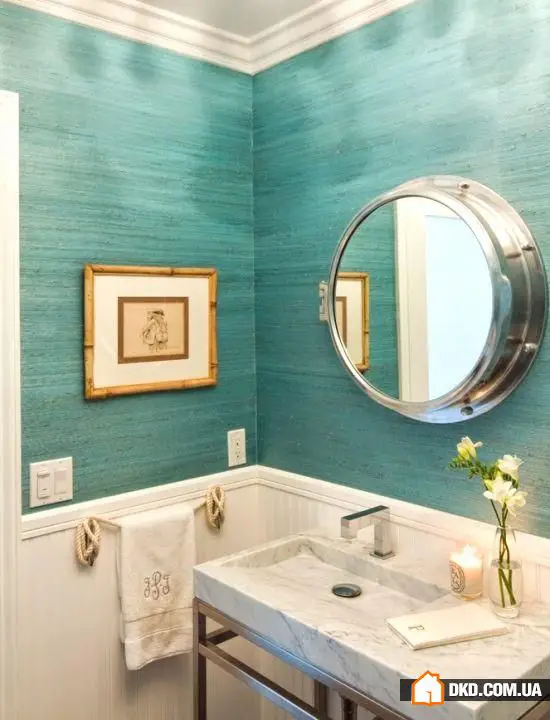

Plumbing
After replacing the floor and finishing the walls, it's time for pipes (plastic ones are replaced quickly and without problems: the main thing is to understand the fasteners) and plumbing. If you've decided to replace the bathtub, sink, shower cabin, toilet, mixers, towel warmers – use your rich experience, or if you lack it, don't hesitate to contact professionals. Otherwise, there's a risk of not only wasting time but also damaging expensive equipment.
For fast timelines (and space savings too!) consider whether a wall-mounted toilet with installation is really necessary. The pedestal for the sink, on the contrary, will come in handy: it installs quickly and hides the drainage system well. Choose models where access to pipes is well arranged.

Clouds Over the Ceiling
If there are no signs of oil-based paint or chunks of plaster falling off the ceiling, confidently apply two or three layers of water-dispersible interior paint with high moisture resistance. For bathrooms and kitchens, many varieties have been released – many of them contain anti-fungal additives, most are breathable, and many can even be applied over old coatings with similar properties.
Other options, at first glance, seem faster and more attractive. For example, plastic panels – PVC, polystyrene, or acrylic – can be used to make a suspended ceiling. Attach them to the stud frame, run recessed lights – and don't forget about waterproofing the wires. Such a ceiling can even be double-level – if it's a justified decision for a four-square-meter area.
Another way is a stretch ceiling: for a bathroom, a PVC variety will do, and a fabric one definitely won't. A beautiful glossy effect, the ability to install lights wherever you want, and quick installation – all these advantages of stretch ceilings are undeniable.
But the breathability of a plastic suspended ceiling or a PVC stretch ceiling tends to zero. If ventilation in the bathroom leaves much to be desired, don't hesitate and spend a few hours preparing the surface for painting (all prep work to remove old coatings should be done before starting the renovation, after removing furniture!)
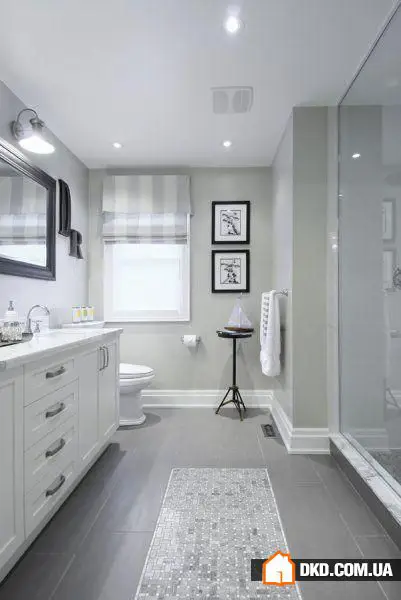
In One Tone: Furniture and Hardware
On one side, a small space should not be visually cluttered with small items – so it's better to use closed cabinets and drawers. Also, they allow you to hide not only small items but also unsightly pipes.
On the other side, if there are few bathroom accessories and they look stylish, you can choose open shelves – they're installed much simpler and faster, and they often look exceptionally elegant. Glass and metal shelves and cabinets have been trendy for a long time, but more and more popular is light wooden furniture. If desired, you can even make it yourself – if, of course, you don't rush to finish the renovation quickly.

In a small bathroom or toilet, all color and texture imperfections are visible. If your door handles are dark bronze, paper towel holders are 'brass', and the paper holder is chrome-plated, this difference will catch the eye immediately.
Choose metal parts for doors, furniture, ventilation grilles, and towel rails in one color – ideally, if it matches the color of mixers and showerheads.
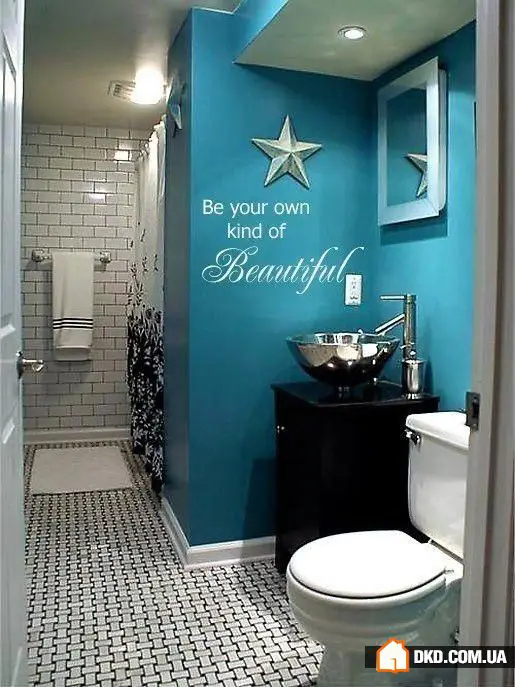
In the Best Light
When choosing light fixtures, also consider the color of hardware, mixers, and the overall style of the space. Besides appropriate design, pay attention to the quality of light – it should be bright but not dazzling. The optimal, though not cheap, choice is LED lights.
And in a toilet, which is already almost a tradition to decorate with a dash of humor, you can use suspended light fixtures. Designers, playing with interior wit, suggest hanging crystal chandeliers in the toilet – and sometimes this really looks very effective.
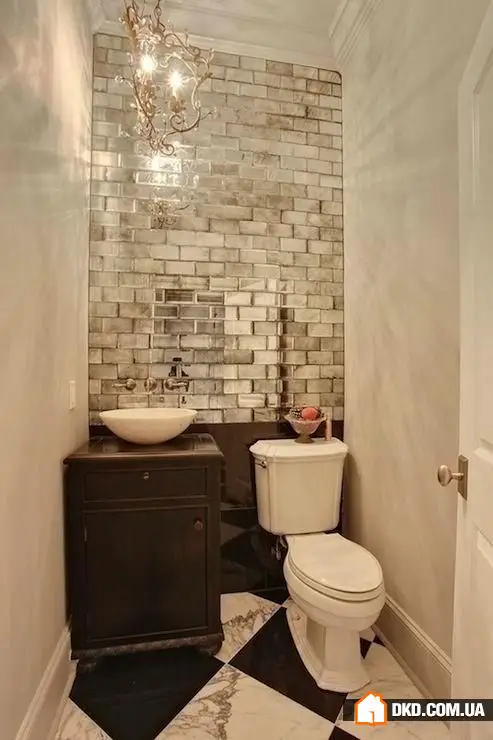
Elegant Functionality
In a bathroom with its small area, interior details automatically become towels and mats. Even shampoo and conditioner bottles are better not chosen at random. However, it's worth noting that a beautiful mirror and attractive little items beneath it, such as a soap dispenser or ceramic dish for toothbrushes, can distract attention from problem areas.
Better to choose neutral functional accessories – white, beige, gray, black bathroom items or metallic-colored ones. Vary the color palette of the interior with textiles. Towels, curtains, and mats can be changed every week – and the bathroom will look refreshed. In fact, refreshed in quick mode.
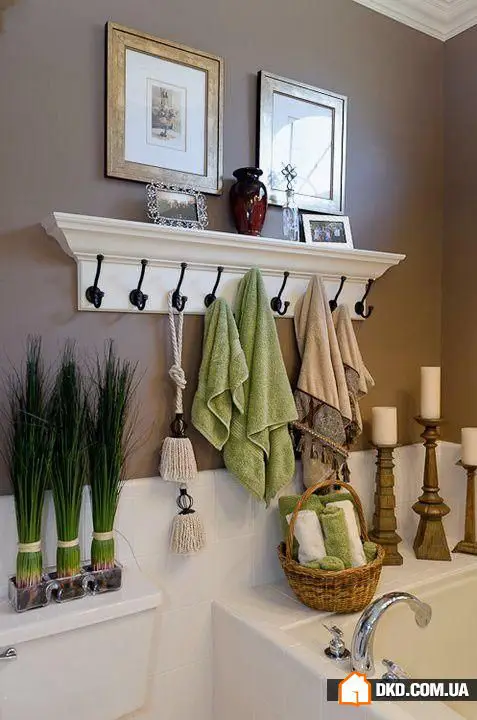
More articles:
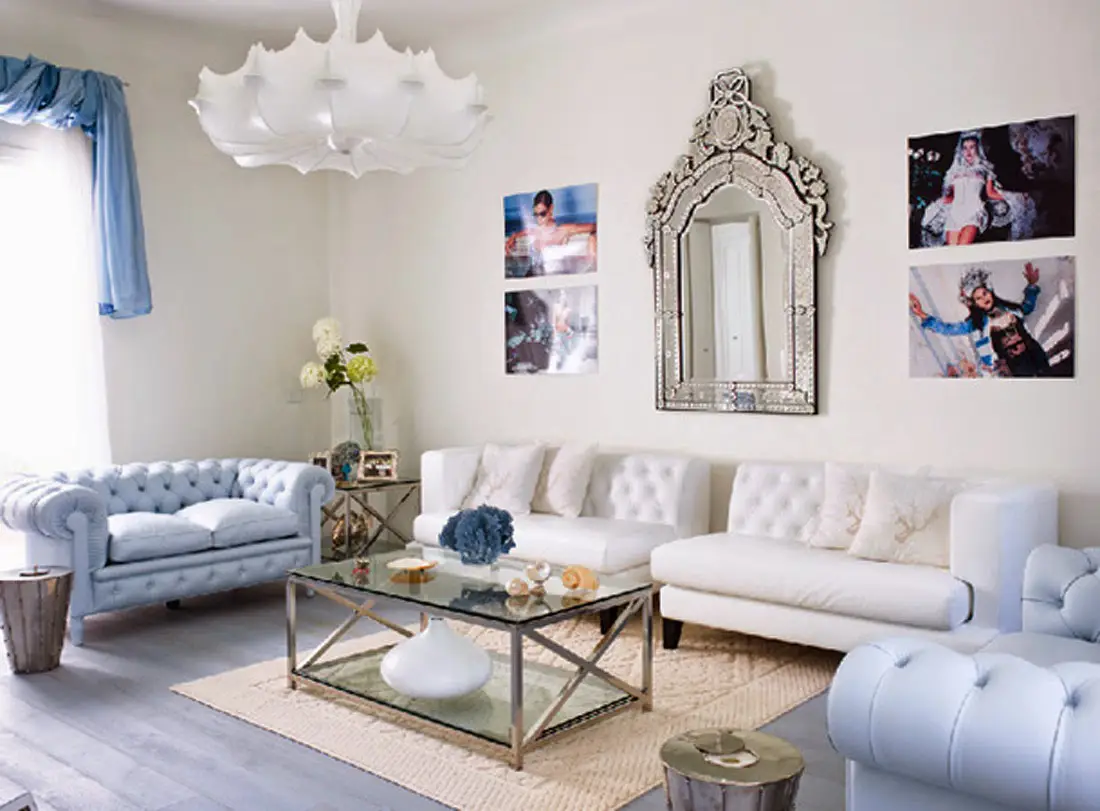 How to Arrange a Living Room According to Feng Shui: 5 Expert Tips
How to Arrange a Living Room According to Feng Shui: 5 Expert Tips 55 Stunning Bathroom Designs from Artisan Tile and Bathroom Studio
55 Stunning Bathroom Designs from Artisan Tile and Bathroom Studio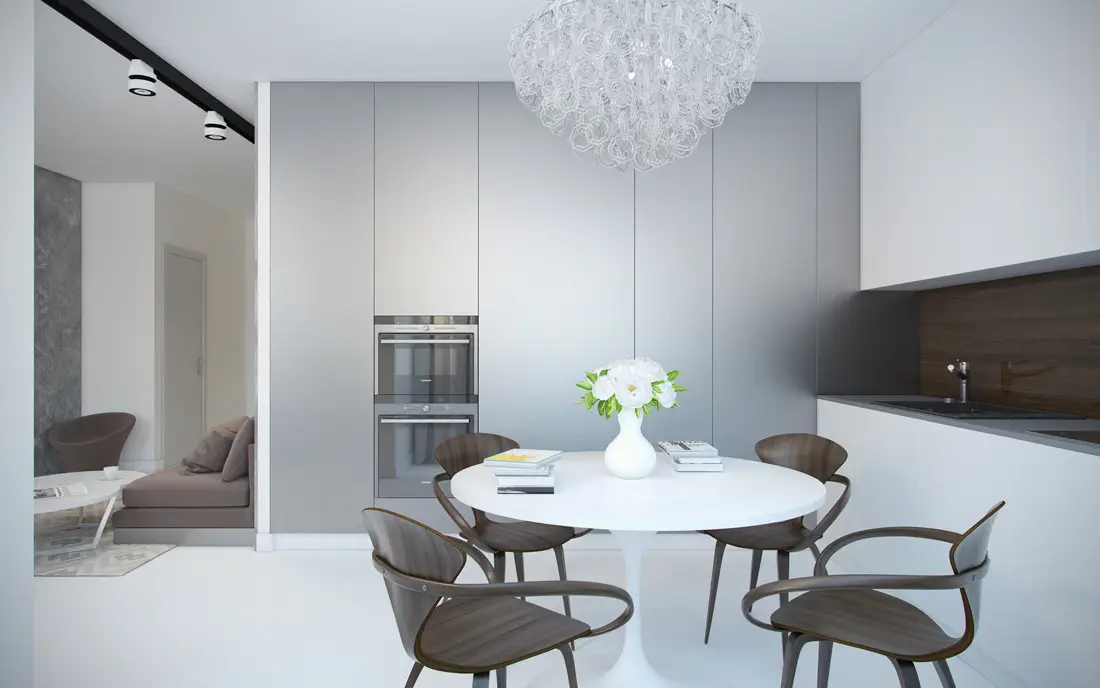 50 Shades of Gray: Kitchen-Dining Room in Modern Style
50 Shades of Gray: Kitchen-Dining Room in Modern Style How to Save Electricity and Reduce Your Light Bills?
How to Save Electricity and Reduce Your Light Bills? Lifehack: 10 Fast Ways to Tidy Up Your Home
Lifehack: 10 Fast Ways to Tidy Up Your Home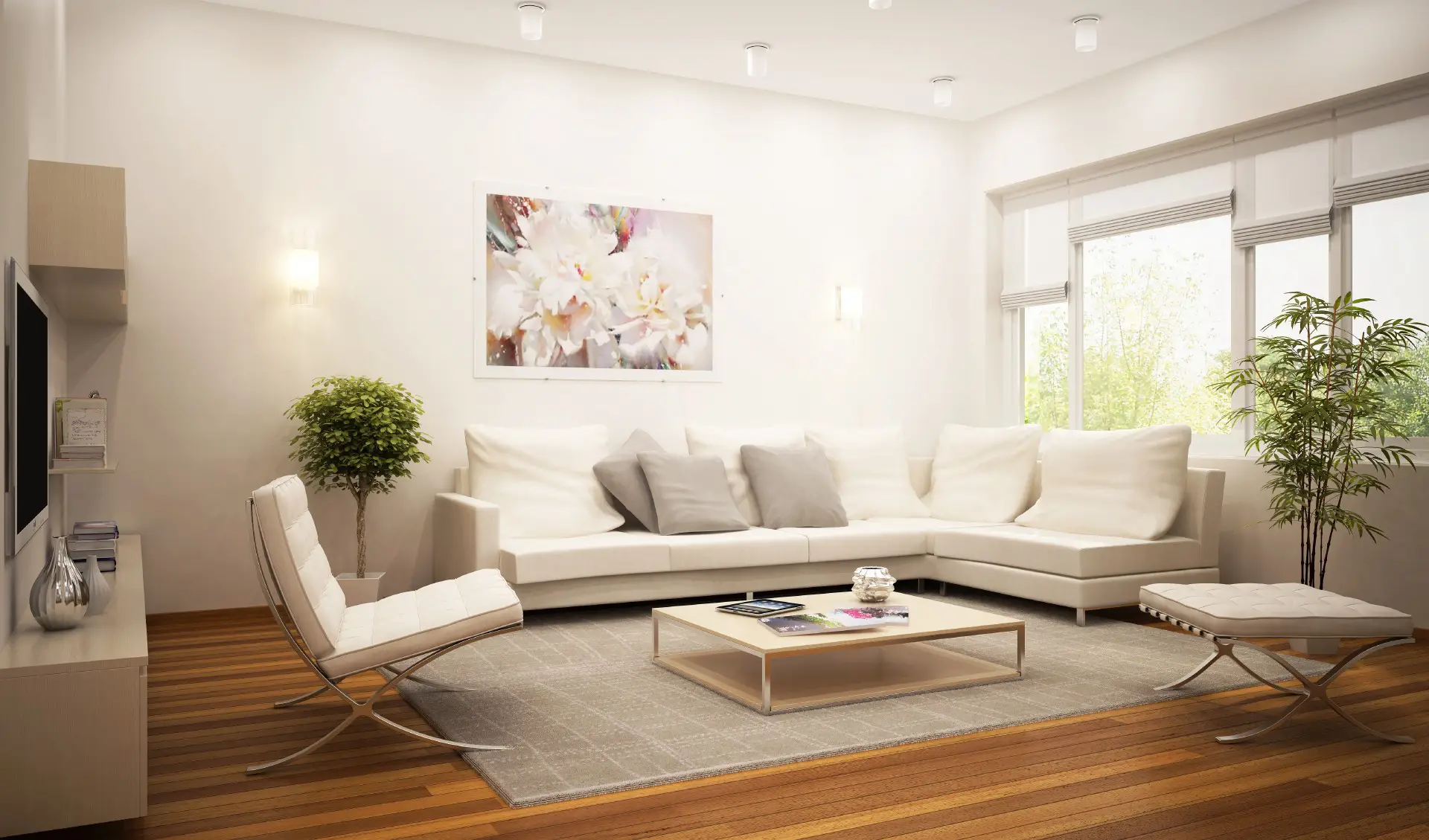 How to Do Cosmetic Renovation in the Living Room: 7 Main Steps
How to Do Cosmetic Renovation in the Living Room: 7 Main Steps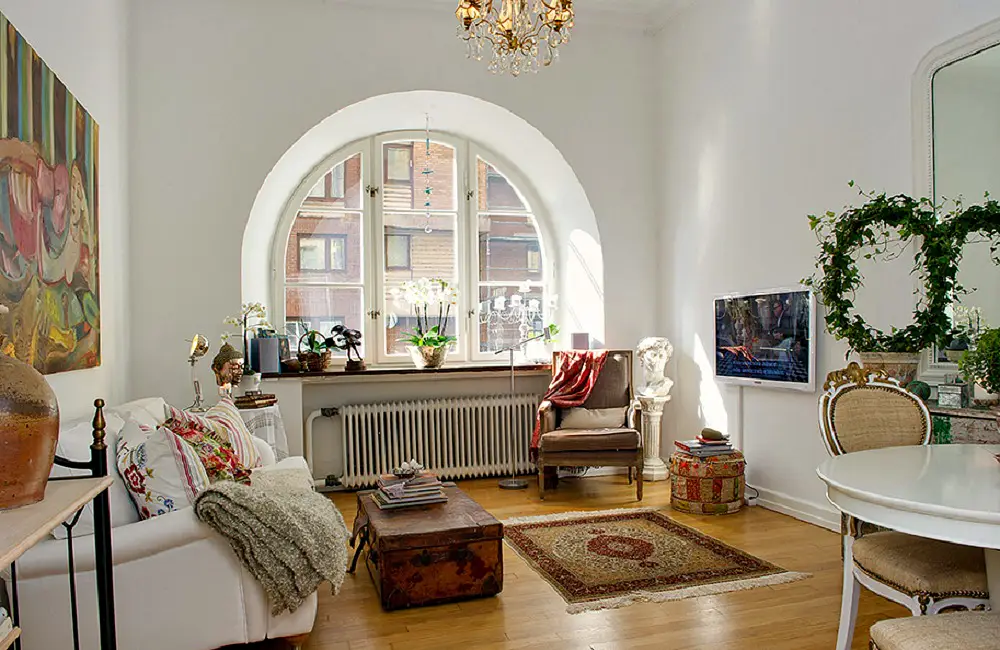 Beautiful Doesn't Mean Expensive: 5 Ideas for Budget Decor
Beautiful Doesn't Mean Expensive: 5 Ideas for Budget Decor Express renovation in the hallway: 10 steps to perfect results
Express renovation in the hallway: 10 steps to perfect results